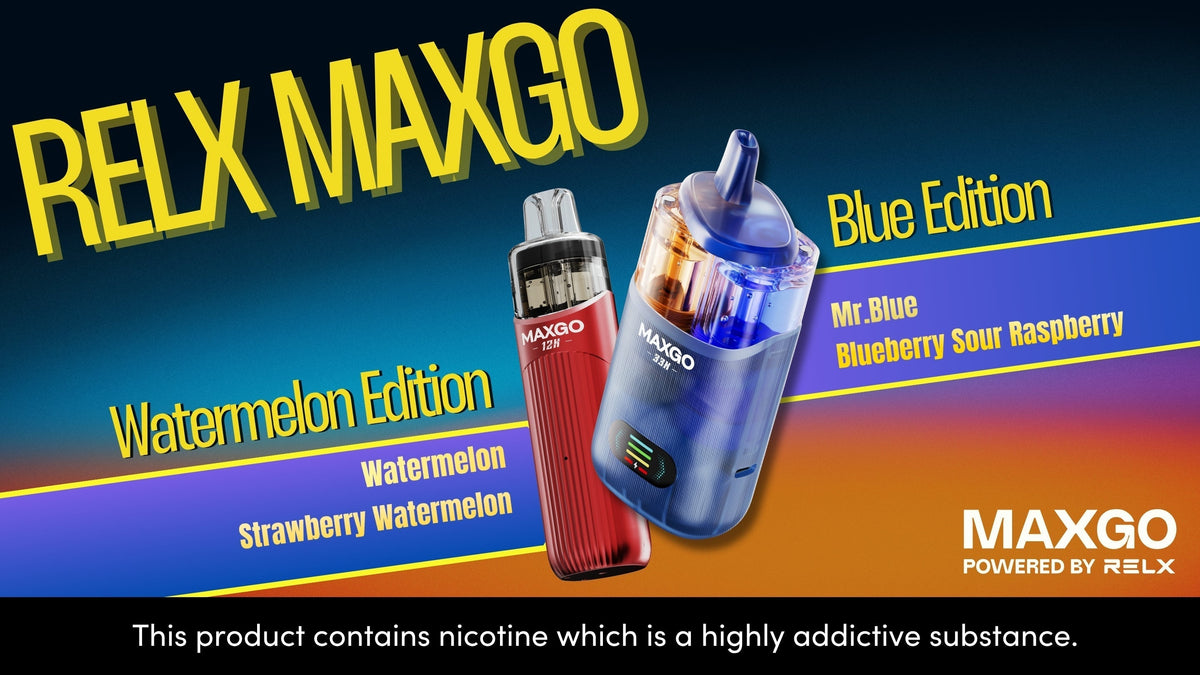What to Expect When You Quit Smoking and Switch to Vaping?
Many people aware of the health problems caused by smoking will switch to vaping to wean themselves off tobacco use.
Vaping can help manage the withdrawal symptoms and cravings if you want to stop smoking. But its benefits last beyond the immediate relief from cravings.
Quitting smoking is a step-by-step journey. Your body will respond hour by hour and day by day when you quit smoking and start vaping.
Read this guide to learn more about where you are in the journey and the unseen changes happening in your body.
What Happens After 8 Hours?
Most people are unaware that their bodies can begin to change within as short a timeframe as 8 hours once they stop smoking.
The carbon monoxide in tobacco smoke reduces oxygen levels in your bloodstream because it attaches itself to the red blood cells and stops them from binding with oxygen.
Even in the first few hours after you quit, the oxygen levels in your blood will start to increase, which won’t be affected by vaping. You might not notice this initially, particularly as your focus will be on changing from cigarette smoking to vaping.
The vapour produced by an e-cigarette doesn’t contain carbon monoxide, so you can use vaping to support your quit programme. In doing so, you can be confident in the knowledge that your body is already starting to recover from the harmful effects of cigarette smoking.
Increasing oxygen levels in your blood will start to make you feel better and more invigorated. Your body will begin to detox all by itself.
Oxygen is vital for energy levels, cell repair, and immune response. One of the best ways to increase oxygen levels in the bloodstream is to stop smoking.
What Happens After 24 Hours?
Twenty-four hours after quitting tobacco cigarettes and switching to vaping, your body will have rid itself of all the residual carbon monoxide. Your heart rate and blood pressure will have begun to change and resume more normal levels.
Your lungs will also begin working hard to remove the debris and mucus accumulated from smoking cigarettes. Some people cough more at this point than they did when they were smoking.
What Happens After 48 Hours?
Noticeable for many ex-smokers is the beginning of the return of their sense of taste and smell.
Many smokers don’t realise how much their habit affects their senses. It’s why non-smokers can’t bear to be in a room full of cigarette smoke, but smokers will barely notice it.
Smoking damages the receptors in the nose and mouth. This condition is called dysgeusia and results from the nicotine and tar contained in tobacco.
Cigarettes damage the taste buds in your mouth. Stop smoking even for just 48 hours, and food and drink will start to taste sharper and more defined.
You will also notice a heightened sense of smell. Smell improves not just around food but also in different situations like smelling fragrance on other people or just the pleasant scents of the different seasons.
If you spend time away from home, you will notice the smell of cigarette smoke when you return – time for a spring clean to get rid of those last traces!
What Happens After 72 Hours?
After 72 hours, your breathing will begin to show signs of improvement. You will feel more energised and get less out of breath, for example, when walking up a flight of steep stairs.
There is no tar in vape products to irritate and clog your airways. Plus, you won’t be experiencing the same withdrawal symptoms as an ex-smoker who is not vaping.
What Happens After 1 Month?
The lungs and airways will continue to improve, and you may also notice that response to colds and viral infections like flu is less severe.
The tar in cigarette smoke prevents the respiratory system from doing its job correctly.
It is a well-known medical fact that smokers can have a worse response to seasonal coughs and colds than non-smokers.
Now, scientists have discovered that smokers can have an exaggerated response to these viruses, which causes more inflammation and increased levels of tissue damage.
What Happens After 3-9 Months?
As you progress through your first cigarette-free year, coughing and wheezing will reduce significantly, and by nine months, these effects should have gone away entirely.
Lung function will have improved as vaping does not contain the same chemicals as cigarette smoke. Oxygen in the bloodstream will also have resumed to your body’s normal levels.
Your clothes and hair will long since have stopped smelling of smoke and your home as well. You probably didn’t notice this while you were smoking cigarettes, but non-smokers will have been very aware of it.
Vaping can help smokers manage cravings and withdrawal symptoms and assist in keeping them on the straight and narrow when times get tough.
It can be difficult to socialise with friends who smoke even after nearly a year. Sometimes, the longer you have smoked, and the more engrained smoking is in your life, the longer it takes to move on from that habit.
What Happens After 5 Years?
You can give yourself a big pat on the back for being nicotine-free for a whole five years!
Quitting cigarette smoking is a personal experience, and some people find it easier than others. You might never have looked back, but for some, craving that cigarette has been an ongoing battle.
Vaping can help manage those maddening cravings as part of a smoking cessation management plan but without the health impacts created by tar and nicotine.
If you make it to the five-year mark, you will have reduced your risk of heart attack by around 50%. This risk continues to drop the longer you stay cigarette-free.
What Happens After 10 Years?
After ten years, your risk of lung cancer will have reduced by half compared to when you were smoking.
The risk of heart attack lowers to approximately the same level as someone who has never smoked.
Conclusion
It is impossible to refute the health benefits of stopping smoking, so what part can vaping play in this process?
Public Health England’s (PHE) Seventh Independent Report on Vaping found that in 2017, 50,000 smokers quit with the aid of a vaping product. These participants would otherwise have carried on smoking traditional cigarettes.
The most successful participants used a vaping product to stop smoking as part of a targeted management plan. They used devices provided by local organisations focused on helping people quit smoking, and study participants had success rates, between 59.7%-74% in 2019 and 2020.
Vaping can help manage nicotine withdrawal and other associated physical and psychological effects from quitting smoking.
If you’re ready to strengthen your commitment to a smoke-free life and have already made the switch to vaping, check out RELX UK for vaping devices, pods, and more.Also in Vape Knowledge

RELX MaxGo Series Showdown: Which Powerhouse Matches Your Vaping Rhythm?

Beyond Disposable: How RELX MAXGO 33K & 12K Redefine Sustainable Vaping Excellence

How Long Until I Can Vape After Wisdom Teeth Removal?
Vaping after wisdom tooth removal is not recommended, as it can cause complications like dry sockets. Patients should wait at least three days before vaping to ensure proper healing and minimize risks associated with the extraction site.















